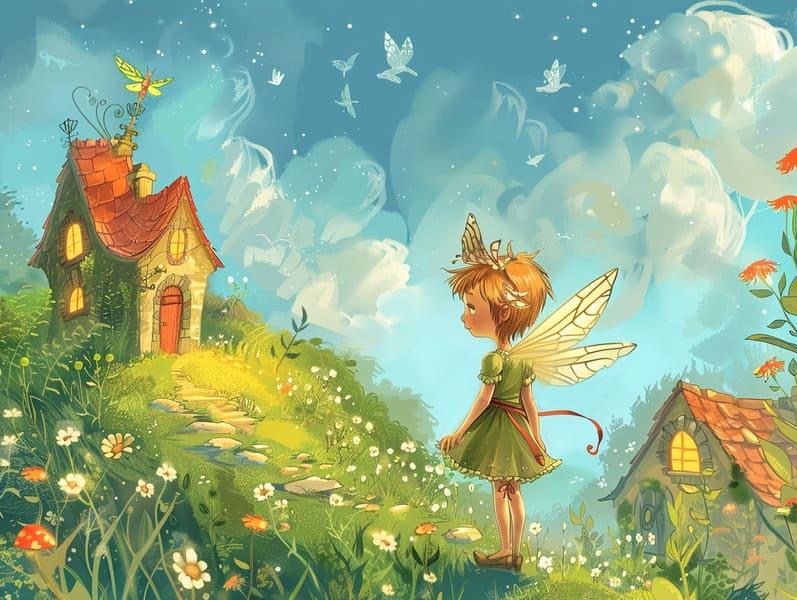The Birth of Vintage Fairy Tales and Its Unceasing Loveliness.
The Birth of Vintage Fairy Tales and Its Unceasing Loveliness.
Blog Article

Traditional fairy tales have legendary status. These narratives have been recounted from one generation to the next long before they were ever documented. They sprang from a variety of civilizations, including Middle Eastern traditions. They were initially transmitted among mature audiences, often carrying themes and messages pertaining to the societal norms and beliefs of the time.
The renowned Brothers Grimm, Jacob and Wilhelm, were among the first to assemble many of these beloved stories. Their compilation, "Grimm's Fables," included narratives like "Cinder Maid," "Hansel and Gretel," and "Little Snow White," which have since become hallmarks in the world of timeless fairy tales. Similarly, H. C. Andersen's fanciful tales, such as "The Sea Maid," and "The Story of the Ugly Duckling," have floated into hearts worldwide, cementing their place in the pantheon of famous fairy tales.
Despite their age, these stories remain as pertinent as ever, especially as kids' bedtime tales. These magical stories are now available in many formats, including colorful picture books, enchanting animations, and online storybooks.
Their unwavering allure can be linked to several captivating elements:
Vital Lessons: Old fairy tales often share important moral lessons. Stories like "The Shepherd Boy and the Wolf" teach the significance of being truthful, while "The Hare and the Tortoise" exemplify the benefits of perseverance and humbleness. These stories offer little ones clear distinctions between ethical and unethical, building their moral compass in a kind yet important way.
Warmth and Understanding: Traditional fairy tales frequently include heroes facing tests and troubles, inciting audiences to empathize with their struggles and cheer for their triumphs. For instance, "Beauty's Beast" highlights the necessity of looking beyond appearances to appreciate the inner self of a soul, nurturing tenderness and awareness.
Cultural Recognition: Many fairy tales are deeply embedded in the cultural contexts from which they originated. Immersing in these fairy tales can provide illuminating insights into different heritages, strengthening a sense of global appreciation and awareness.
Inventiveness and Fantasy: The whimsical elements in ancient fairy tales—magical spells—foster children’s inventiveness. These fairy tales bring readers to imaginary realms, fostering inventive dreams and a sense of awe that continues a lifetime.
Old fairy tales are not only enchanting but also edifying. They serve as bewitching tools in enhancing various thinking and feeling skills in the young. When old fairy tales are spoken out loud, they enhance speech development by teaching new phrases and elaborate sentence structures. This practice also improves auditory skills and mindfulness, as young ones remain attentive, keen classic fairy tales to see what happens next.
Furthermore, examining the themes and characters of ancient fairy tales can nurture intellectual skills and logical thinking. Little ones are taught to discern patterns, expect results, and understand cause and effect. These examinations also ease the young voice their thoughts and feelings, advancing their emotional intelligence.
In today’s electronic age, the presence of digital storybooks has made these stories more within reach than ever. Internet resources and online apps give large libraries of classic fairy tales that can be experienced or listened on anytime, anywhere. Fairy tales read out loud are particularly common, giving an engaging way for the young to enjoy these mesmerizing stories. Audiobooks and spoken videos guide characters and settings to life, often supported by bewitching melodies and harmonies that intensify the tale-telling adventure.
The timeless appeal of traditional fairy tales lies in their ability to change to current eras while keeping their central messages. Contemporary retellings of these tales often introduce more inclusive characters and modern settings, making them meaningful to today’s audience. However, the key lessons of valor, generosity, and fair-mindedness remain unchanged, continuing to connect with kids of all ages.
Ancient fairy tales also offer a sense of serenity and predictability. They impart upon a tidy narrative with a unmistakable beginning, middle, and end, often winding up with the conclusion of conflicts and the triumph of good over evil. This consistency can be soothing for young readers, allowing a sense of solidity in an fluid world.
Classic fairy tales continue to entrance and train new generations, maintaining their majesty and relevance in modern society. As bedtime stories for kids, they grant a perfect blend of fascination and comprehension, developing moral values, empathy, and creativity. The prevalence of internet fairy tales and the sought after status of fairy tales told out loud ratify that these traditional fairy tales remain acquirable to new generations.
By retaining and communicating these tales, we continue to treasure the rich tapestry of storytelling and cultural heritage. Whether you are delving into a richly illustrated book, viewing a cyber library, or listening via an read-aloud story, the radiance of famous fairy tales is always within reach. These fairy tales point out of the everlasting magic of tales and its ability to tie us across generations and cultures.
Be it you are enjoying a beautifully illustrated book, viewing a virtual collection, or listening via an voice book, the mystique of ancient fairy tales is always within reach.
These tales show us of the eternal magic of stories and its ability to bond us across epochs and places, casting a charm that delights and instructs alike.